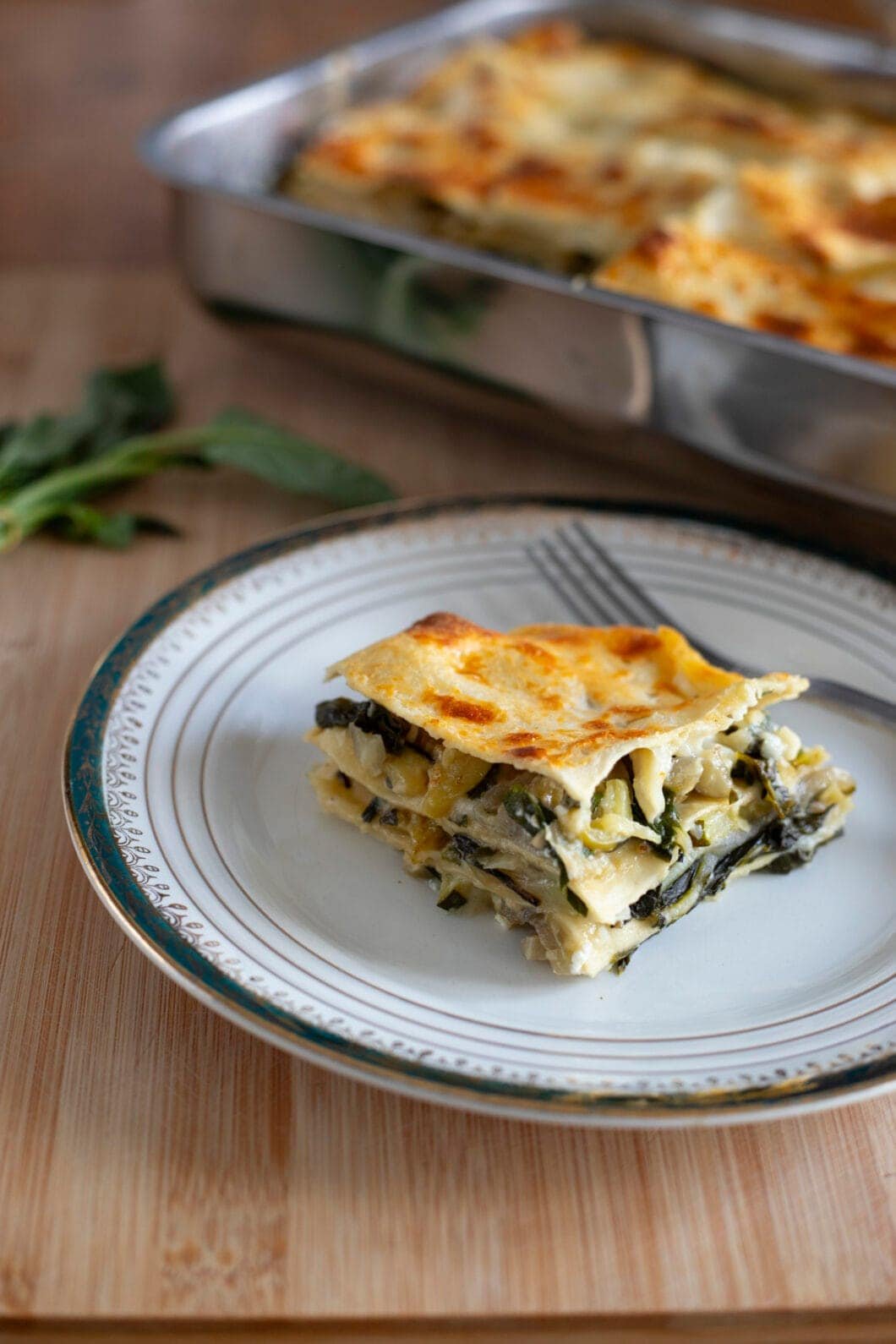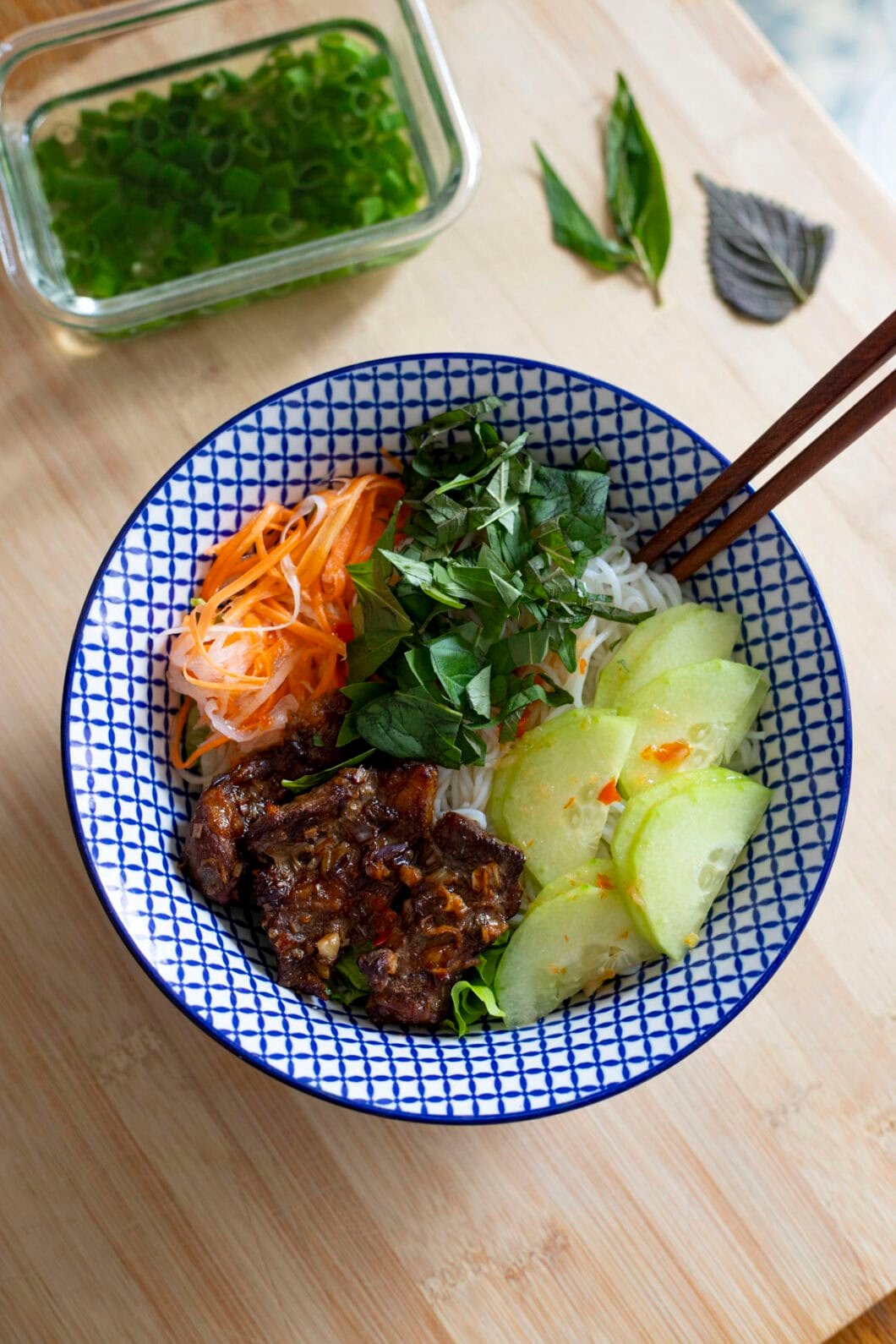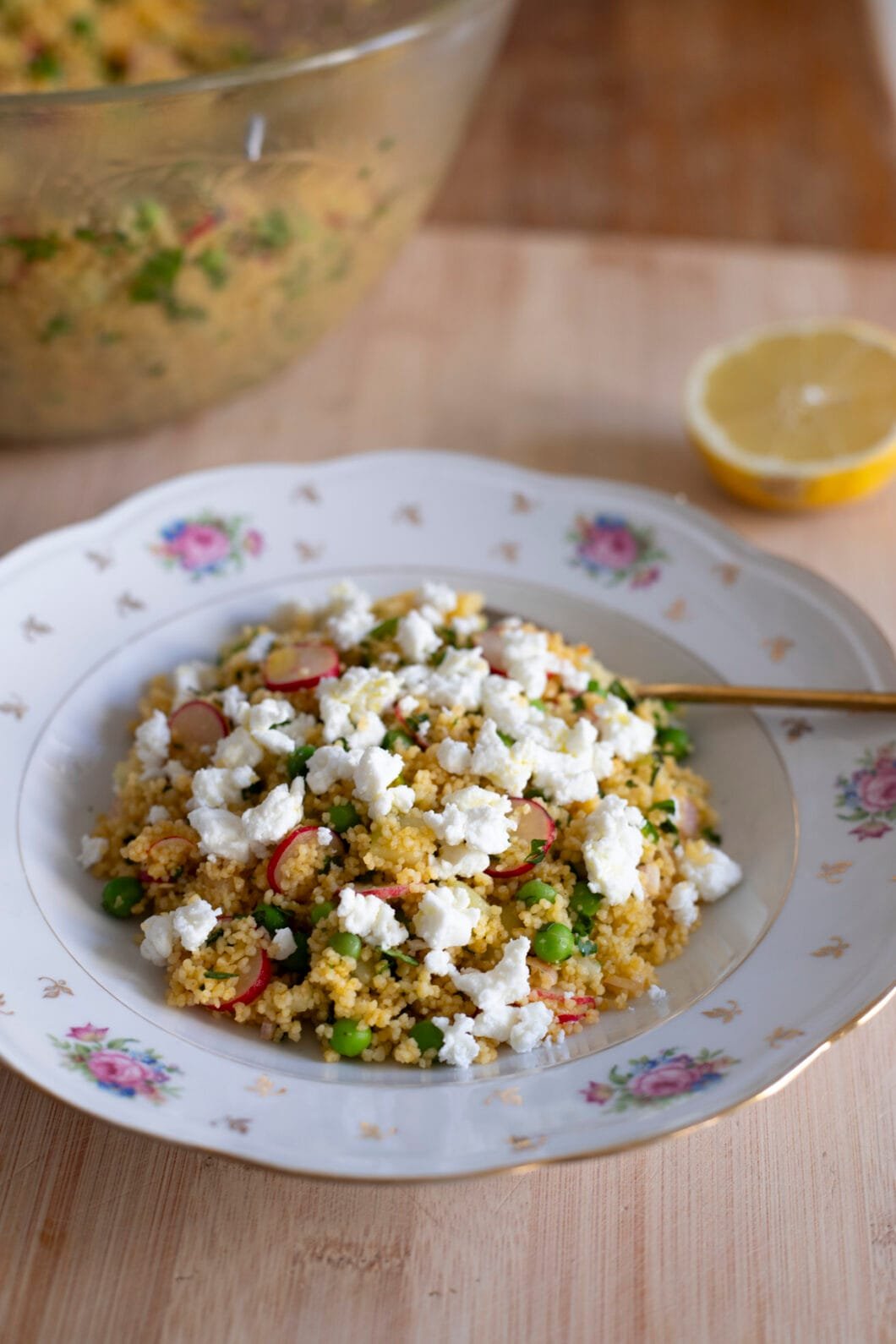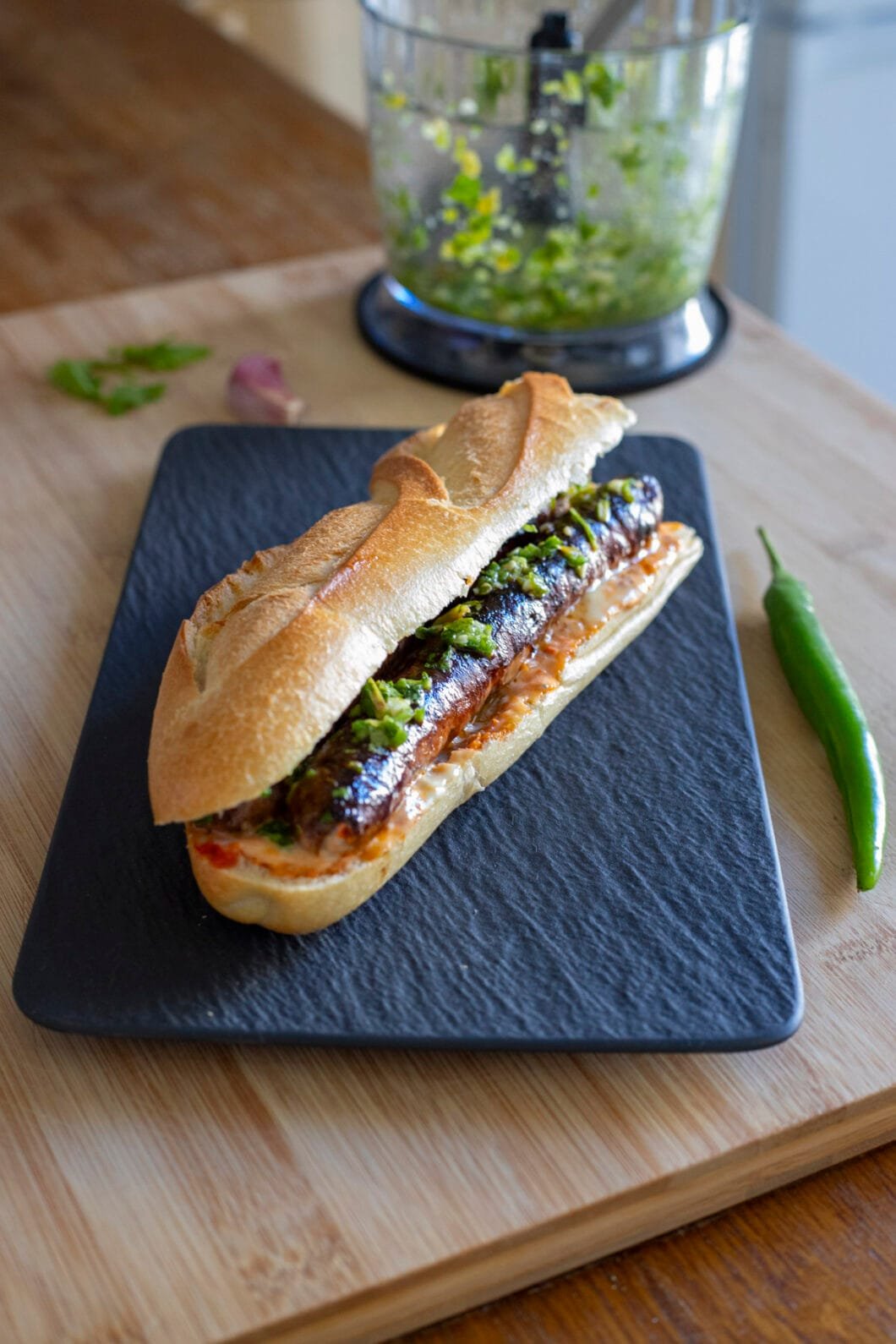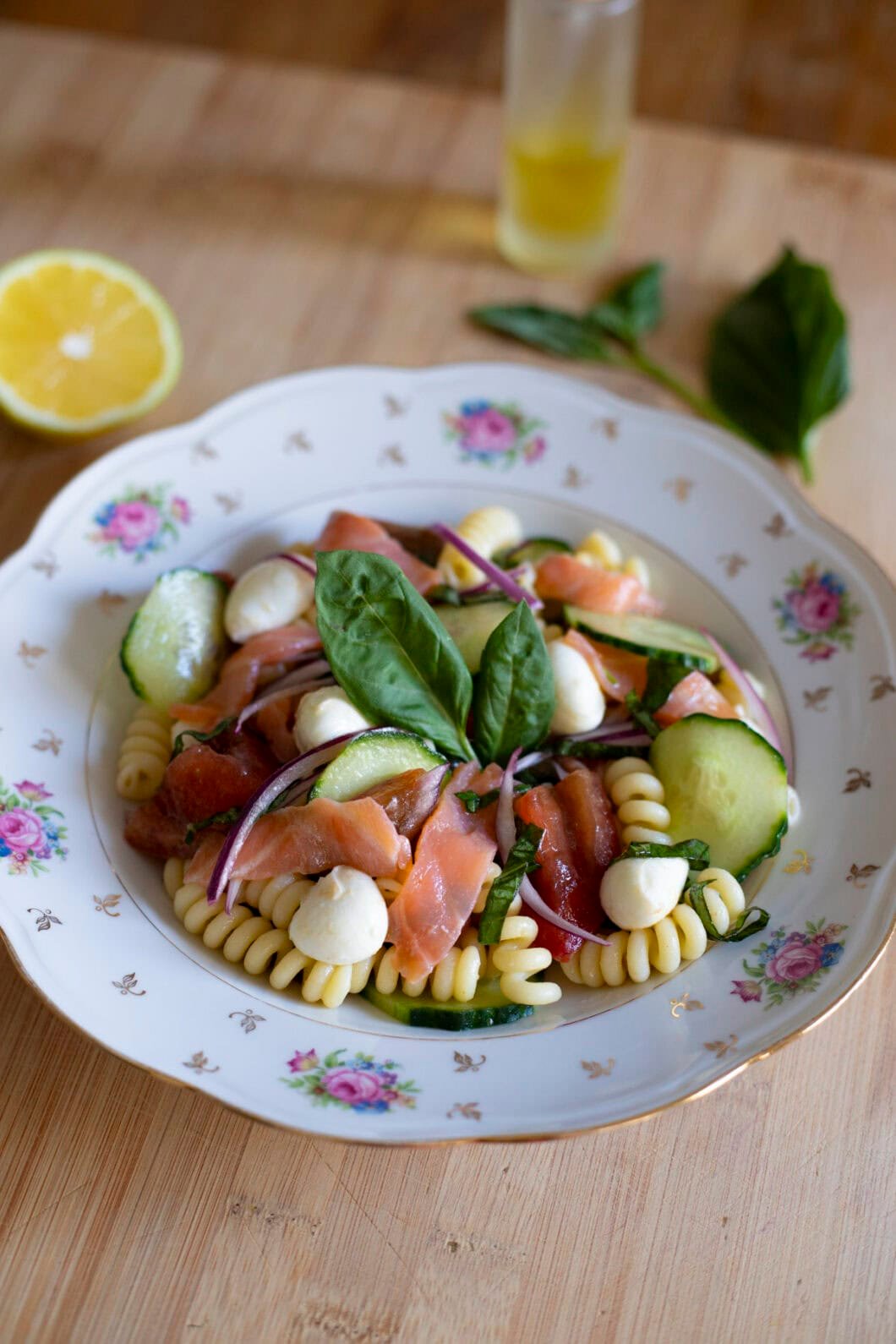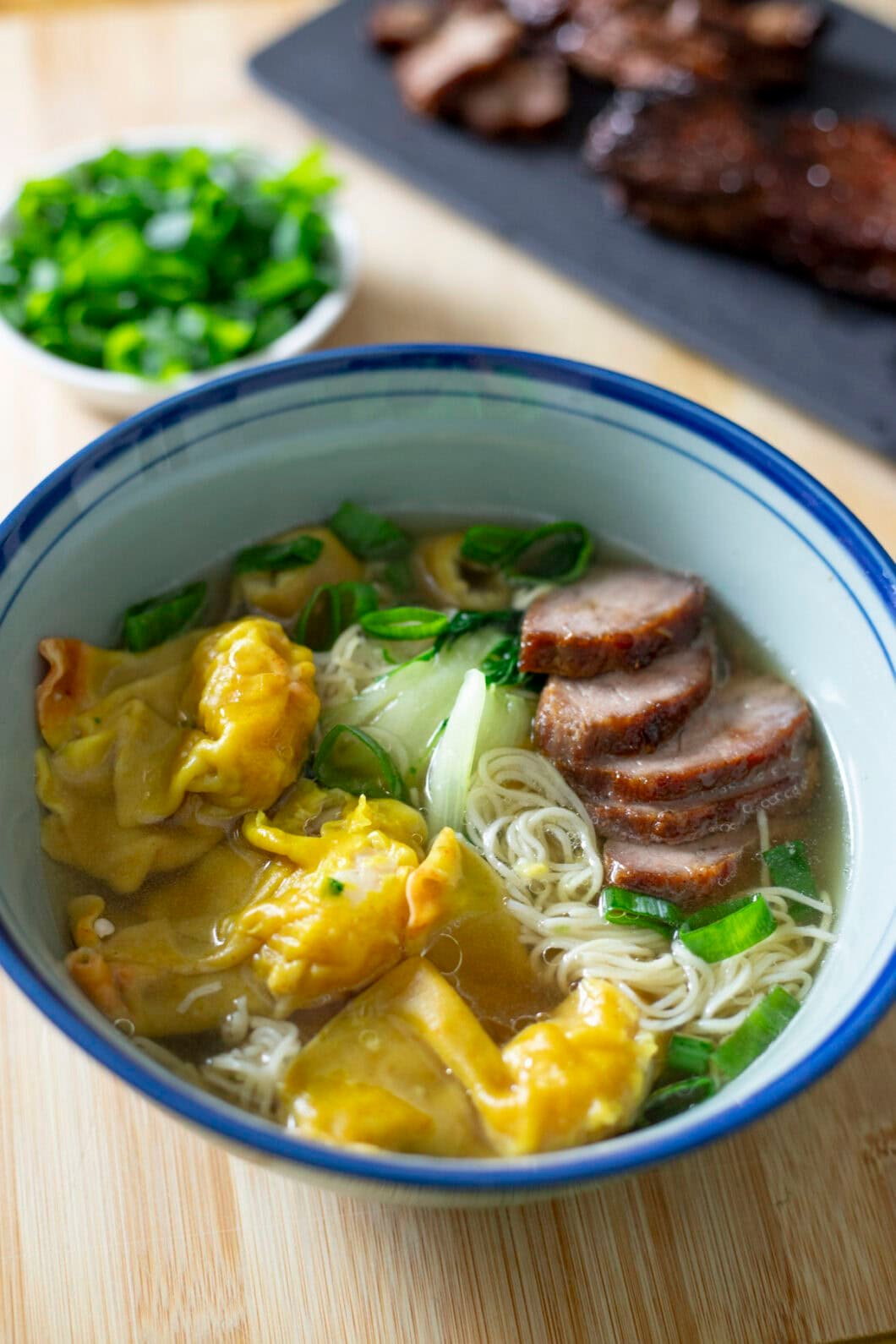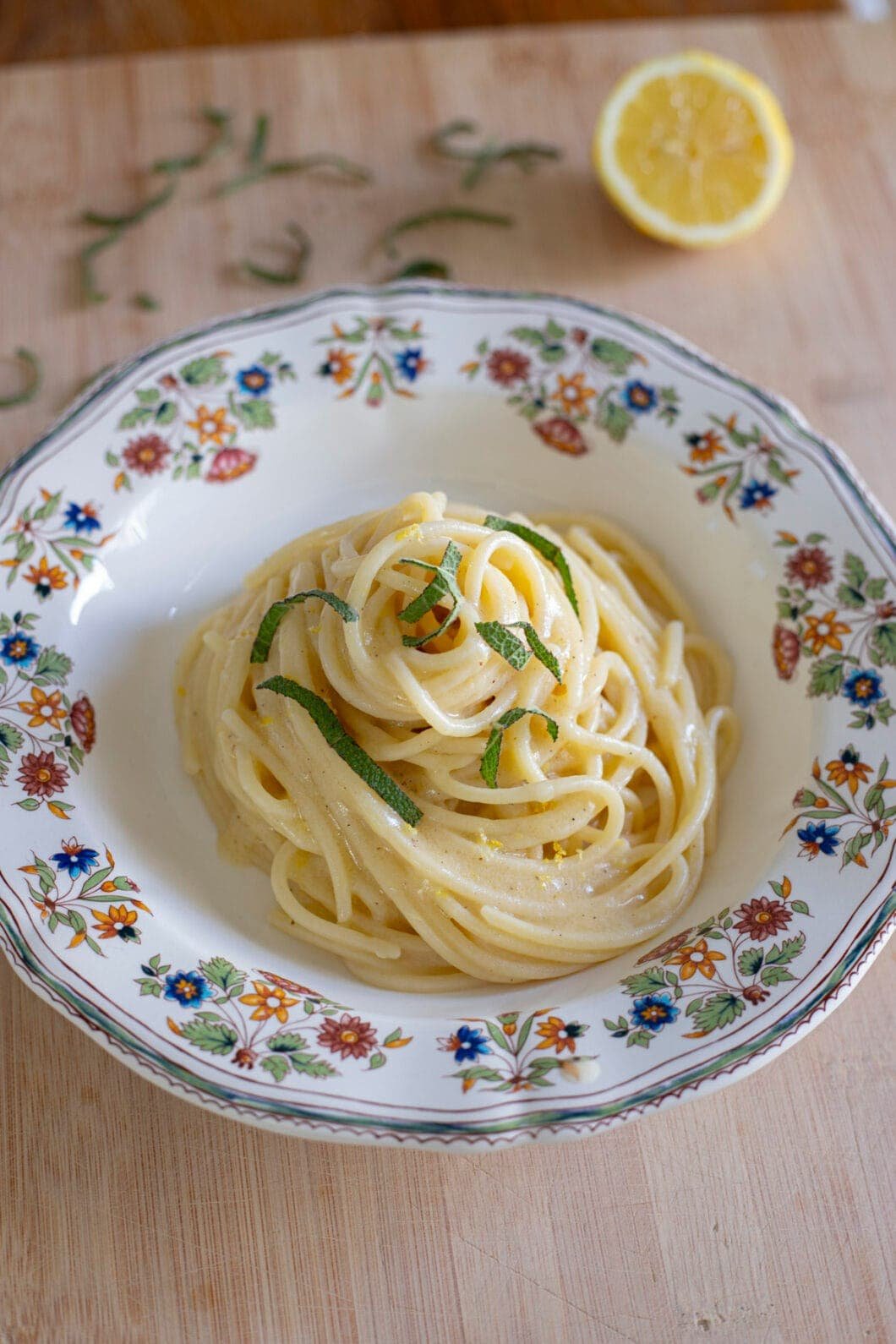A few weeks ago, I started craving ricotta & spinach lasagna after watching a mouth-watering video on Instagram. Yet I was frustrated because this was off-season, and I couldn’t bring myself to make it.
I tend not to remain frustrated, food-wise, for long.
The gears in my mind started turning, as usual, at nightfall, when I was tossing and turning in bed. Green lasagna. That was what I wanted. With cheese. Ain’t nobody said spinach was needed specifically ! Nor ricotta.
I was only a few google researchs away from my solution : the beloved Swiss Chard.
Swiss chard is at its best between May and October, which makes it perfect for your springy or summery cravings. Earthy, slightly bitter when raw, like Spinach, it turns mild and sweet when cooked, especially the leaves. It needs to be cooked a bit longer than Spinach, especially because of its fibrous stems.
To remove any remaining bitterness, I decided to combine Swiss Chard with Zucchinis. When I settled on zucchinis, I thought : Goat Cheese ! Yay ! I could taste this great pairing in my mouth, and couldn’t wait to give it life.
I was left dumbfounded by the fresh, fragrant yet generous taste of this lasagna dish ; you’d think it quite plain, with mostly, well, greens, but it was quite the opposite. The herbs used –mint, basil, chives and oregano– were instrumental in bringing that fragrance and freshness, aided by the bright acidity goat cheese and lemon provide. The richness of the creamy béchamel and the Pecorino romano leaves you craving for more after each mouthful.
Green Lasagna with Swiss Chard and Zucchini (Veggie) – Recipe
Ingredients – Pieces of advice
- You can either pick fresh lasagna sheets or dry ones.
- If choosing dry ones, you’ll need to cook them 10mn longer, and to make sure your béchamel is liquid enough. Then it works great !
- If you’re feeling lazy, you can replace swiss chard with frozen spinach, which saves quite a bit of prep time. You simply thaw them, squeeze them well, and slice them up roughly. That’s it !
- You don’t need a fancy goat cheese log for these lasagna ; I used a supermarket one, and it worked well.
Off to your kitchen now !
Note : This happens to be a vegetarian dish, and I have never thought of it as such -I assure you your omnivore friends will be equally thrilled by this wonder !


